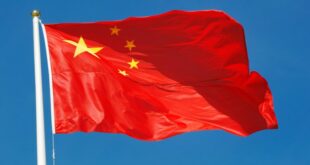Some human shields are volunteers, some are hostages — and some are just in the way.
Of all the phrases that get tossed about in fierce arguments over the current war in Gaza, one of the most common might be “human shield.”
In both the Hamas attack on Israel on October 7, and Israel’s attacks on Gaza in the four months since then, civilians accounted for at least two-thirds of the victims.
Israel has argued that Hamas deliberately uses the civilian population of the Gaza Strip both to shield its fighters and to attempt to discredit Israel’s legitimate efforts to defend itself — by portraying Israel as a callous killer of civilians in the court of public opinion, and in the Court of International Justice.
Critics of Israel’s campaign have said the Israel Defense Forces (IDF) use the term as a catch-all excuse for killing thousands of civilians who were merely in proximity to Hamas fighters and infrastructure in a crowded territory where there is nowhere else for them to go. They also accuse Israel of hypocrisy and point to some of its army’s own practices as classic examples of human shield use.
A recent legal concept
International law has only so much to say on the subject, and the legal concept of the human shield only dates back to 1977, when Protocol 1 was added to the Geneva Convention: “The presence or movements of the civilian population or individual civilians shall not be used to render certain points or areas immune from military operations, in particular in attempts to shield military objectives from attacks or to shield, favour or impede military operations.”
In short, said international law professor Neve Gordon, “protected people — civilians — cannot be used to shield a legitimate military target. And if they are used, then it does not render the target immune from attack. I can still attack the target even if it is protected by human shields.”
But the presence of “human shields” doesn’t free an attacking army from the rule of proportionality — which states that the cost in civilian lives must be justified by the importance of the military objective. Even if one side cynically places civilians between itself and an enemy, that does not give the other side carte blanche to kill everybody.
Gordon, an Israeli-born professor of international law and human rights at Queen Mary University of London, is co-author of the book “Human shields: A History of People in the Line of Fire.”
He said there have always been both voluntary and involuntary human shields. American Rachel Corrie — a volunteer with the pro-Palestinian International Solidarity Movement — or Greenpeace activists who used their own bodies to prevent nuclear weapons tests in the Pacific are examples of people who exposed themselves willingly.
Other human shields, Gordon said, are essentially hostages — “Me as a soldier taking a civilian, putting the civilian in front of me so that the other warring party won’t try to kill me, or using the civilian to open a bag in a house to make sure it’s not booby-trapped.”
“Now, what we claim is that there is a third kind of human shield,” Gordon told CBC News. “That is the human shield that does not volunteer and is not coerced, but just by being where they are, they become human shields. Or more precisely, I would say they’re framed as human shields.
“In the Gaza Strip, for example, if the Hamas tunnels are a legitimate military target, and the tunnels span 700 kilometres, then they are under the whole Gaza Strip. So anyone above them becomes a human shield. And so you are casting or framing the whole civilian population almost as human shields.
“Now why is that important? Because according to international law, once someone is a ‘human shield,’ the law doesn’t require you to protect them as much as you would protect a civilian … And when you kill them, the party to blame is not you that killed them, but the party that used them.
“That’s the logic.”
In Gaza, it’s general knowledge that tunnels could be anywhere, but Palestinians say they are reluctant to discuss such matters publicly because they fear Hamas, which is constantly hunting for informers.
The buyer of an apartment knows better than to ask whether a tunnel runs under it. Such a question can lead to arrest and interrogation by a group that, like the IDF, has a well-documented pattern of using torture to extract information.
With an estimated 700 kilometres of tunnels beneath a territory of just 365 square kilometres, Gaza has few places far enough from a tunnel to escape the 380-meter blast radius of the largest bombs the IDF has dropped on the enclave.
Double standards
But Gordon said there is an inconsistency to the claim that mere proximity to military infrastructure makes a person a human shield.
“When Israel bombs a mosque or a school or an apartment building and kills civilians, it blames Hamas for using human shields. And yet Israel’s military command centre is in central Tel Aviv, and its Southern Command centre is in the centre of Beersheba,” he said. “And when Hamas bombs these cities, no one in the Western media says that the Israeli civilians around these centres are human shields.
“It’s not proximity to fighting that renders you a shield. It’s proximity to a non-state actor that is fighting.”
By the same token, Canada’s centre of war planning, the Department of National Defence, is located in downtown Ottawa despite being an obvious target in any war. But the government of Canada is not accused of using the shoppers at the neighbouring Rideau Centre as “human shields.”
Western countries are as guilty as Israel of this double standard, said Gordon, citing the example of the two attacks on Mosul, Iraq.

“In 2014, ISIS attacks the city and captures it from the Iraqi forces and no one there is framed as a human shield,” he said. “Only in 2016, when the Iraqi coalition, together with the U.S. military, recaptures Mosul do human rights organizations, the UN and the media frame the whole population in Mosul as human shields.
“The Western countries that are fighting in the Middle East don’t want to seem as if they’re killing civilians. Basically, any male person you kill from the age of 14 to 70 is automatically presumed to be a combatant. Therefore, Western countries either kill ‘combatants’ or ‘human shields.’ They never kill ‘civilians.’
“This human shield argument is being mobilized as a legal argument to defend countries that have been killing many civilians.”
The IDF and human shields
CBC News asked the IDF how it defines the term “human shield”. An IDF spokesperson responded: “The exploitation of human shields is forbidden under international law. The IDF only targets individuals who are militants in terrorist group or those who are taking a direct part in the hostilities. Even when targeting such individuals and other military objectives, the IDF takes care to take feasible precautions to mitigate harm to civilians.”
While the Israeli army has struggled to back up some specific claims about Hamas’s use of human shields, its overall allegation has been supported by none other than the UN Relief and Works Agency (UNRWA), which has long complained about Hamas disrespecting its neutrality by hiding weapons in or near schools.
Hamas is clearly guilty of endangering civilians through reckless placement of weapons, but the IDF also has a long history of using Palestinian civilians, including children, as human shields in the classic sense: by literally forcing civilians to stand in front of them.
Israeli forces have been captured on camera tying a child to the hood of an armoured vehicle to discourage stone-throwing, placing blindfolded civilian captives in front of them and firing rifles directly over their shoulders, and forcing civilians to open doors where soldiers suspect danger.
When Israeli troops use a civilian home in the West Bank as a base of operations, they often make the family remain with them to discourage attacks.
The ‘neighbour procedure’
The practice of seizing civilians to use as human shields in operations in the Occupied Territories was so routine by the 1990s it had a euphemistic name: the “neighbour procedure.”
In August 2002, while a coalition of Israeli and Palestinian rights groups were in court trying to have the neighbour procedure banned, Israeli troops forced a young man called Nidal Abu Mukhsan to stand in front of them as they approached a house where a Hamas militant was holed up, resulting in Mukhsan’s death.
The Israeli Supreme Court then issued an order banning the neighbour procedure. But the army was reluctant to give it up; it petitioned the court to allow Israeli troops to continue to place civilians in front of them if the civilian “consented” to the procedure.
Rights groups argued that no Palestinian civilian would be likely to refuse consent when faced with a group of armed Israeli soldiers, but the court sided with the IDF and approved a nominally consensual “prior warning procedure.”
Further incidents followed, some involving children, until in 2005 the Supreme Court also banned the prior warning procedure.
Two years after the ban, rights group B’tselem reported on 14 more cases in which children as young as 11 were forced by Israeli soldiers to act as human shields. In one case, a 14-year-old girl in Gaza was shot twice while being used as a shield.

IDF prosecutors were often reluctant to enforce the rules. They charged two soldiers who forced a nine-year-old boy in Gaza to open a bag they thought contained a bomb, but declined to bring charges against Brig-Gen. Yair Golan, accused in five separate cases. Golan would later go on to become deputy chief of staff of the IDF (and later a left-wing politician and a figure of hate for Israel’s far right).
Israeli human rights group Breaking the Silence has published video interviews with former soldiers who discuss the continued use of the procedure.
The most recent documented use of a civilian human shield was two weeks ago in the West Bank town of Dura, where cellphone store owner Baha Abu Ras was used by a soldier who placed him in front of him and aimed his rifle over his shoulder. Once they were done with him, the soldiers let Abu Ras go. He was not accused of involvement in any armed group.
Israeli soldiers did not know that they were being filmed from an upstairs window. The footage, later aired on CBS News and by Reuters, showed that the “neighbour procedure” is still in use.
Denying civilians their status
Both sides in the Israeli-Palestinian conflict routinely question the non-combatant status of people on the other side who normally would be considered civilians.
Hamas has long argued that every Israeli male over the age of 18 is a combatant, citing the fact that Israel conscripts almost all Jewish males into its armed forces and then typically expects them to serve in its reserves for many years.
Hamas has even divided its Israeli hostages into civilian and military categories based on that interpretation, treating any Israeli man who has previously served in the IDF as a military hostage with lower priority for release (and, perhaps, a higher price tag in any eventual exchange).
The distinctions Hamas makes are academic in any case, since it has long targeted Israeli civilians of both genders and all ages, who live within Israel’s borders, using suicide bombers, rockets, ramming and shooting attacks and other means.
Hamas cares enough about its image to deny some of the worst atrocities alleged by Israel in its October 7 attack, although its deliberate killing of hundreds of unarmed Israeli civilians was thoroughly documented.

Israeli officials also have made statements that suggest Palestinian civilians could be seen as targets. Perhaps the most notorious was a remark by Israeli President Isaac Herzog that was cited by the International Court of Justice in its recent decision, in which it found evidence of violations of the Genocide Convention (although a final ruling may be years away).
“It is an entire nation out there that is responsible,” Herzog said. “It is not true this rhetoric about civilians not aware, not involved. It is absolutely not true.”
Other Israeli officials were also cited by the court. Herzog has complained his remarks were misconstrued.
Given the high death toll in Israel’s Gaza campaign, described even by close ally President Joe Biden as the product of “indiscriminate bombing,” claims about human shields seem likely to form a major part of Israel’s defence against the charge of genocide.
‘The whole notion of a civilian could disappear’
Gordon said there is an urgent need for nations to clarify who is a human shield, and to ensure the definition of mere proximity isn’t allowed to erase the spirit of the laws of armed conflict.
“More and more, warfare is moving to the cities,” he told CBC News. “If this argument succeeds, then the whole notion of ‘civilian’ disappears, because the only way non-state actors can fight against high-tech states that have amazing surveillance apparatuses and amazing weapons is to go to the cities. And that’s what they’ve been doing, not only in Israel-Palestine, but throughout the Middle East.
“And so if we accept this argument of proximity to non-state fighters, then the whole idea of a civilian and hospitals and schools that need to be protected will be gone. That is what is at stake and the stakes are very high. So I really hope that the judges will be able to see what the ramifications of their rulings will be, so that we don’t end up in a situation [where] international law cannot protect civilians.”
ABOUT THE AUTHOR

Senior Reporter
Evan Dyer has been a journalist with CBC for 25 years, after an early career as a freelancer in Argentina. He works in the Parliamentary Bureau and can be reached at evan.dyer@cbc.ca.
*****
Credit belongs to : www.cbc.ca
 Atin Ito First Filipino Community Newspaper in Ontario
Atin Ito First Filipino Community Newspaper in Ontario






